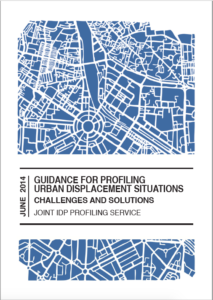
Most of the world’s displaced people – refugees and internally displaced persons (IDPs) alike – reside in urban areas. They form part of an expanding global majority: the urban poor.
However, displacement in urban areas presents a number of particular challenges: other than in camp settings, where registration is possible and displaced populations tend to be relatively homogenous, in urban areas displaced persons tend to be “invisible” as they live next to host communities. This makes it difficult to identify and access these populations. For agencies mandated to protect and assist displaced people, distinguishing them from other impoverished and vulnerable people hence presents both ethical and practical challenges.
In order to target programming, urban development planning, and policy making appropriately, it is often necessary to profile a displaced population as well as compare their situation to that of host communities. A profiling approach offers solutions to some of these challenges, as outlined in the Guidance for Profiling Urban Displacement Situations.